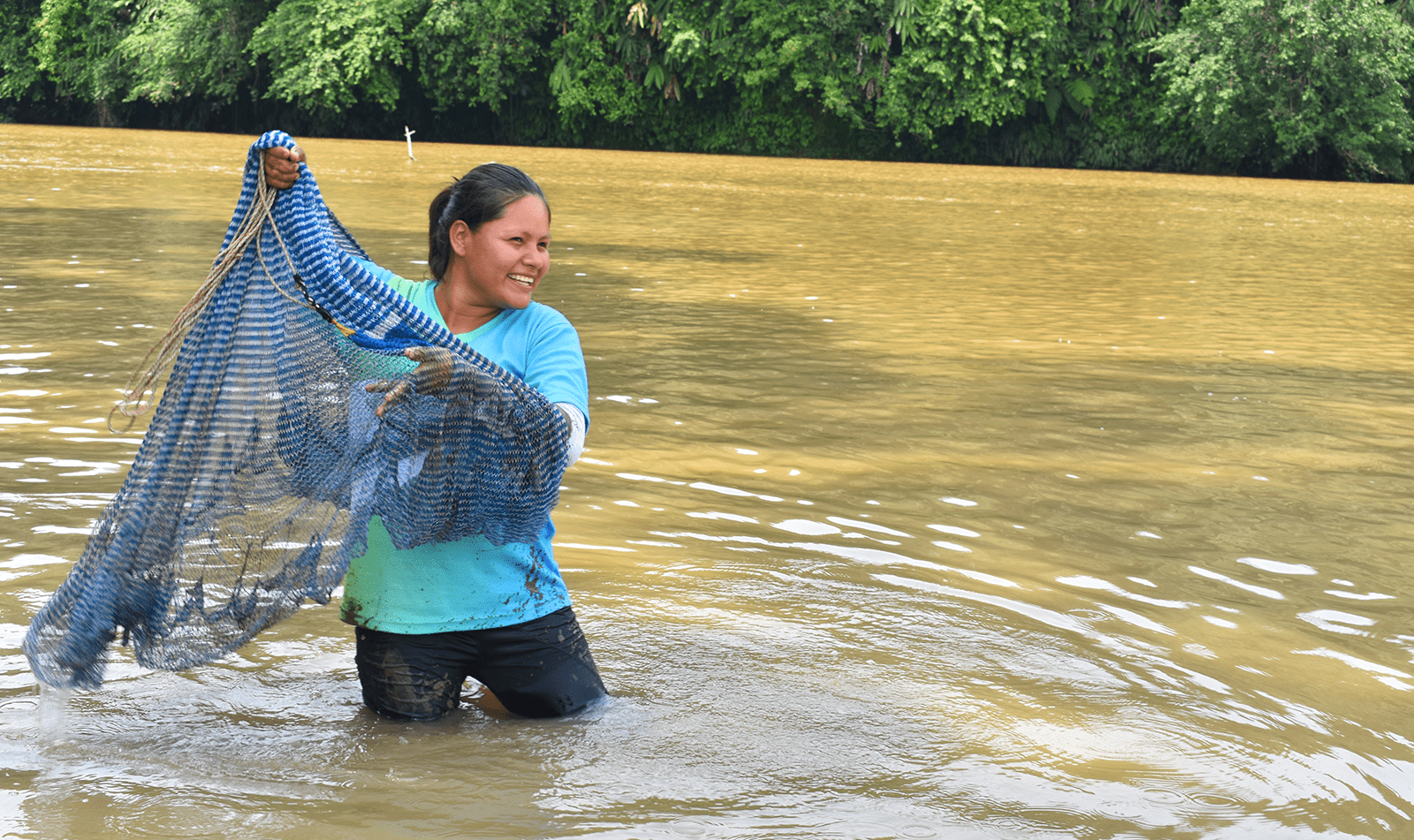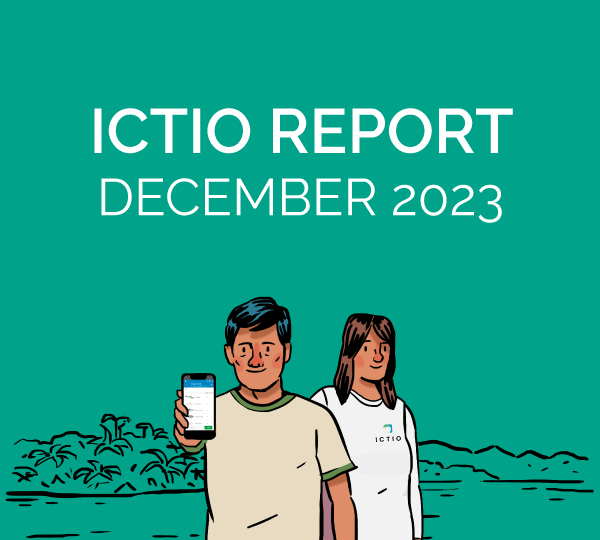Liseth Chuim is a citizen scientist and fisherwoman. She lives in the Shuar Kaputna Center, on the southern edge of the Ecuadorian Amazon in the province of Morona Santiago. She has participated in the citizen science program promoted by WCS Ecuador and uses the Ictio app to record the fish in the rivers surrounding her home.

© Fernando Anaguano / WCS
How did you become part of the members of the community using the Ictio application?
Since I was a child, I have always liked fishing. I used to follow my dad whenever he went fishing with a throw net. I used to like touching fish skins. When Fernando Anaguano (wildlife biologist and Fishing Specialist of WCS Ecuador) arrived at the community, I told him that I also wanted to participate in the program because not only men can fish, but women can do it too.
To record the fish, you used the Ictio tool, what did you learn from this tool?
Yes, the new thing we can learn with Ictio is how fish migrate and come from other places. We used to catch fish and consume them, but we didn’t know where they came from or what importance they had.
How do you feel about recording fish using technology?
It’s something new for us. We had never had that opportunity here in Kaputna. I feel proud to be recording fish, measuring, and extracting tissues. For me, it’s beautiful, I already feel a bit like a scientist.
Is there any anecdote that has happened to you?
I went fishing in the Zamora River and caught a tilapia; a tilapia in the big river, imagine! It is not common to find this type of fish in that river. I caught a lot, as if I had fished in the tilapia pools. According to Fernando, finding tilapia there is something new.
In addition to recording the results of your fishing, tell us why you take tissues?
We take tissues from the fish’s skin to put them in alcohol so that Fernando can take them away.
Fernando Anaguano, WCS Ecuador specialist, explained that the extracted tissues are preserved in alcohol for future molecular analysis to determine possible new species or for phylogenetic analysis. The tissues are deposited in the National Institute of Biodiversity of Ecuador, INABIO, just like 669 specimens of 124 fish species that Liseth, along with Fernando and the other participants in the community’s citizen science program, have collected.
Liseth is one of the more than 670 people throughout the Amazon Basin who are recording their fish catch data, contributing to a database that already has over 106,300 observations as of March 2023. Citizen science is helping answer questions about fish migration patterns and fisheries at the scale of the Amazon Basin.
For more information about this citizen science tool visit ictio.org





